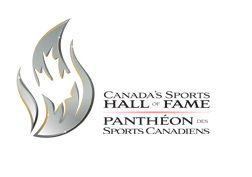Home | Major Sporting Events | Grey Cup
History of the Grey Cup
PreviousNext
Originating during the 1860's, Canadian football gradually evolved from a modified version of rugby into a distinctively North American team sport. Reflecting the game's growing popularity, in 1909, Canada's ninth Governor General Earl Grey donated a silver trophy to establish a national amateur football championship. Community and collegiate teams from central Canada fought for the Grey Cup until 1921, when teams from Western Canada also began vying for the trophy. Igniting regional rivalries, the new East-West format transformed the championship game into an exciting, emotionally charged spectator experience.
1948 marks the year the Grey Cup became a truly vibrant celebration of Canadian sport and culture. Playing in the championship game for the first time, the Calgary Stampeders travelled to Toronto followed by two train cars filled with supporters from the West who promptly turned the host city upside down. Square dancing downtown in ten-gallon hats, they served pancake breakfasts from chuckwagons, and according to popular legend, rode horses directly into the lobby of the Royal York Hotel. The Stampeders returned home victorious, but it was the energy and enthusiasm of their fans that ushered in a new era. From that point on the Grey Cup would be celebrated as much for the parades, parties and colourful traditions that brought Canadians from different parts of the country together as it was for the action it inspired on the gridiron.
Grey Cup heroes often mirrored important social changes in Canada. The first professional Canadian football player of Chinese heritage, running back Norman Kwong helped the Calgary Stampeders claim the trophy in 1948 before winning three consecutive Grey Cups with the Edmonton Eskimos between 1954 and 1956. Named Canada's most outstanding professional football player in 1955 and 1956, he embarked on his career only one year after Chinese Canadians were granted the right to vote. His record-setting ways made him one of Canada's most beloved football icons, reflecting the nation's growing pride in its multicultural potential.
Despite being misplaced, damaged, and nearly incinerated, the Grey Cup has endured for over a century to become one of the most iconic symbols of Canadian sport. Although the Grey Cup became a professional championship after the Canadian Football League was established in 1958, viewership and attendance have consistently surpassed the League's regular-season popularity. Reflecting the game's broader cultural significance, many Canadians have embraced the Grey Cup as a powerful symbol of their own national identity. Celebrations commemorating the championship's 100th anniversary in 2012 emphasized the game's unique ability to transcend geographic and cultural differences and bring Canadians together as one community. In the 21st century, Lord Grey's legacy endures as a distinctive, unifying thread in the nation's cultural fabric.
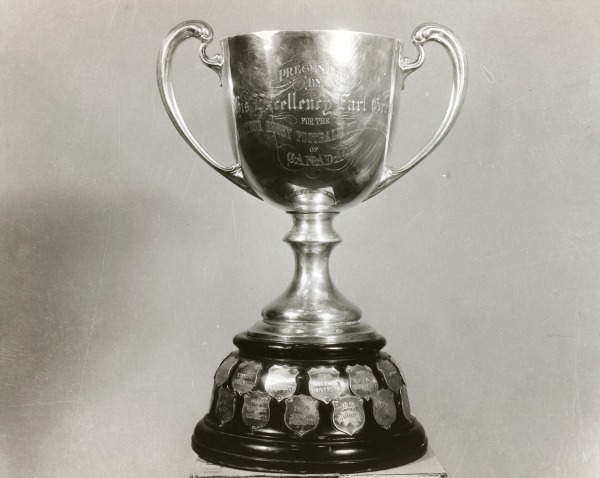
Albert Grey, the Governor General of Canada, commissioned a trophy to be awarded for the Dominion Amateur Rugby Football Championship ( named the Grey Cup). The trophy was made by Birks Jewelers of Canada for a cost of $48.00. The Cup has had the base enlarged twice in order to make room for the names of the winning teams.
Collection: Canada's Sports Hall of Fame
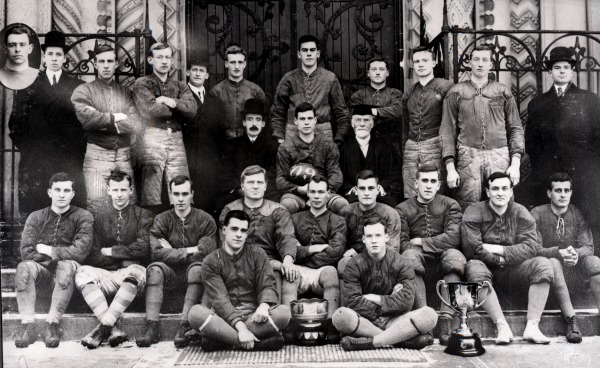
The winners of the first Dominion Championship in 1909 were the University of Toronto Varsity Blues, who defeated the Toronto Parkdale Canoe Club 26-6. At this time football was played at the amateur level and many of the teams came from universities.
Collection: Canada's Sports Hall of Fame
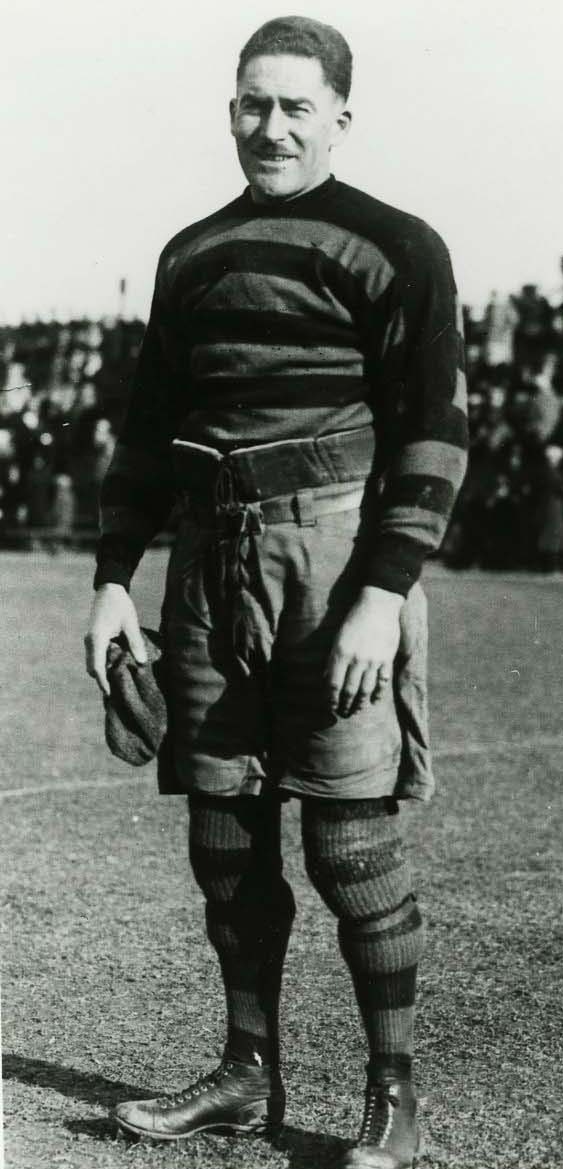
The Grey Cup game was suspended from 1915 to 1919 as players served in the military during World War One. Frank "Pep" Leadlay resumed his football career after the War. While attending Queen's University as team captain he led the team to three consecutive Grey Cups between 1922 and 1924. He rejoined the Hamilton Tigers and won two more Cups in 1928 and 1929. He was known for his leadership both on and off the field.
Collection: Canada's Sports Hall of Fame
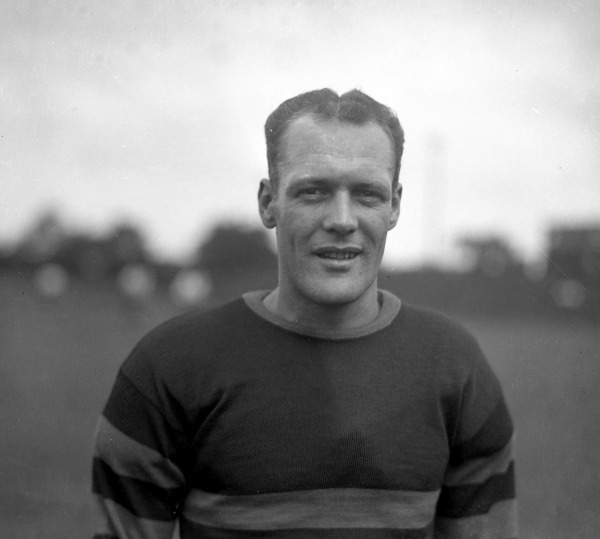
Hawley Welch won his first Grey Cup games with the Hamilton Tigers in 1928 and 1929. Known as a strong kicker his play was pivotal in the 1931 Grey Cup when he kicked two singles, a convert and a field goal as the Montreal Winged Wheelers won the game and he had his third Grey Cup victory. "Huck" played in the Tea Bowl game in 1944 while serving overseas with the military during World War Two.
Collection: Canada's Sports Hall of Fame
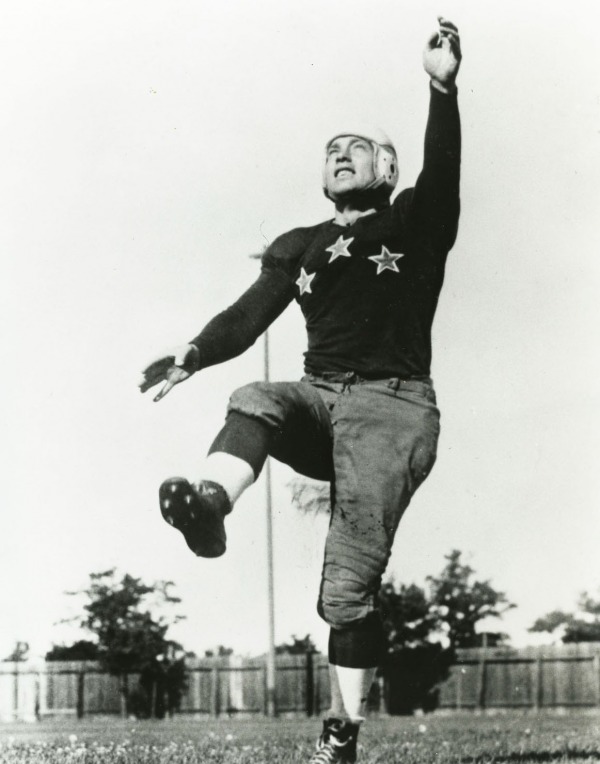
Hugh "Bummer" Stirling was a 60-minute man, playing both defensive back and running back. He won the Grey Cup with the Sarnia Imperials in 1934 and 1936 and was the first football player to win the prestigious Lionel Conacher Award as the male athlete of the year. The Sarnia Imperials were sponsored by Imperial Oil who guaranteed every player a company job.
Collection: Canada's Sports Hall of Fame
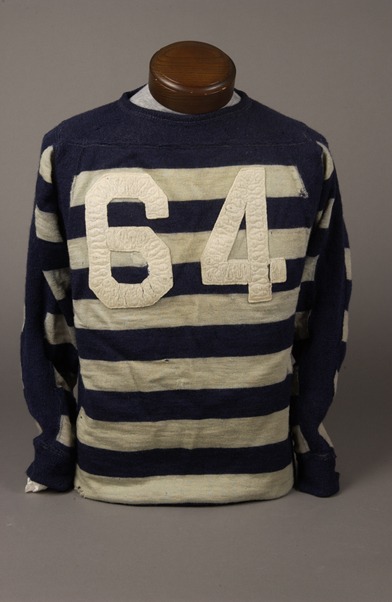
Roy "Red" Storey was an all-round athlete who played football, ice hockey, baseball and lacrosse. In the 1938 Grey Cup he made three touchdowns and set up a fourth to lead the Toronto Argonauts on a come-from-behind victory over the Winnipeg Blue Bombers in the final quarter of the game. He was also an official in hockey and football and refereed several Stanley Cup finals.
Collection: Canada's Sports Hall of Fame
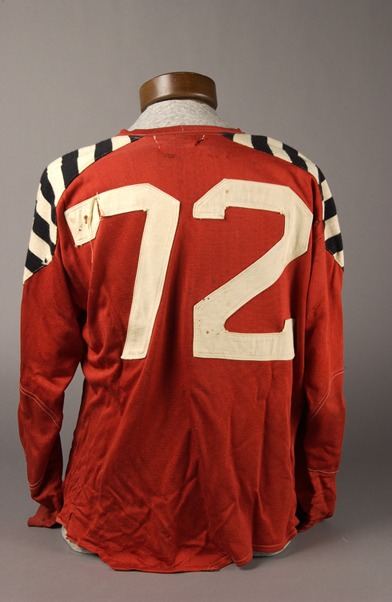
Tony Golab was known as the "Golden Boy" of Canadian football. Considered as one of the best backfielders he won the Grey Cup while playing for the Ottawa Rough Riders in 1940. In 1941 he staged one of the most amazing plays in Grey Cup history when he fielded his own short punt and scored a touchdown. He served during World Two as a fighter pilot.
Collection: Canada's Sports Hall of Fame
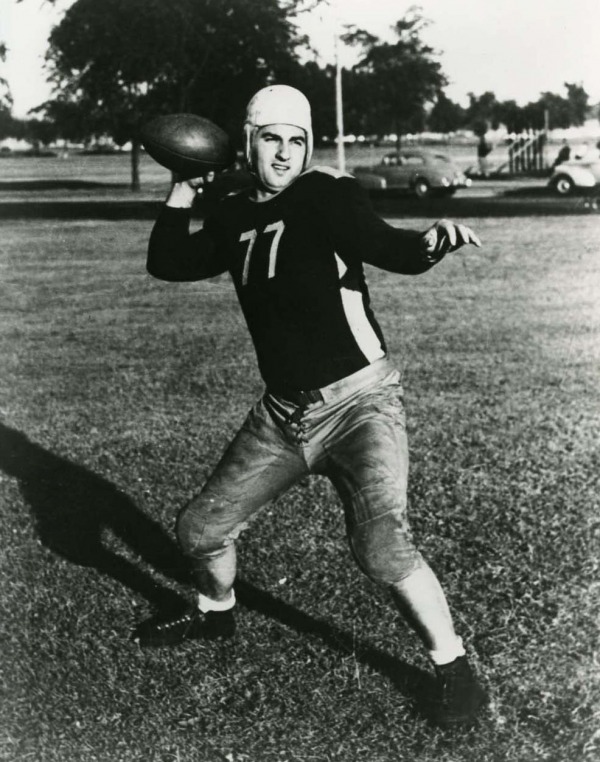
Joe "King" Krol played for the Hamilton Flying Wildcats, a military service team, when they won the Grey Cup in 1943. Joe was another 60-minute man who excelled in passing, running and kicking. The Wildcats merged with the Hamilton Tigers in 1950 to become the Hamilton Tiger-Cats.
Collection: Canada's Sports Hall of Fame
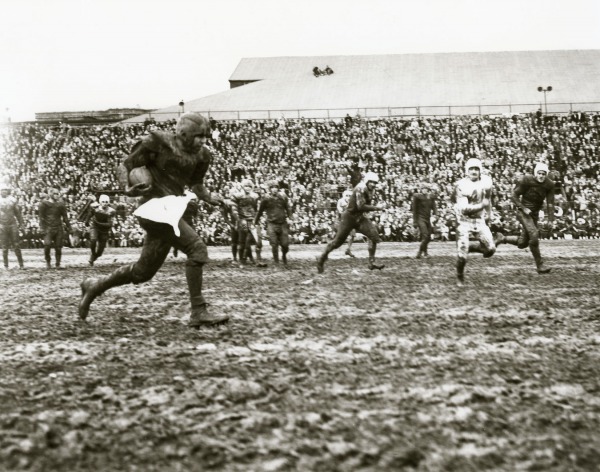
Football is a sport played in all weather conditions. In 1950 the infamous Mud Bowl occurred. A snowfall before the day of the game turned to steady rain and the field became a rutty, muddy quagmire. Both teams had difficulty moving the ball and the Toronto Argonauats won 13-0 against the Winnipeg Blue Bombers. Criticism of the venue eventually led to the site of the Grey Cup game being moved among the participating cities in the league.
Collection: Canada's Sports Hall of Fame
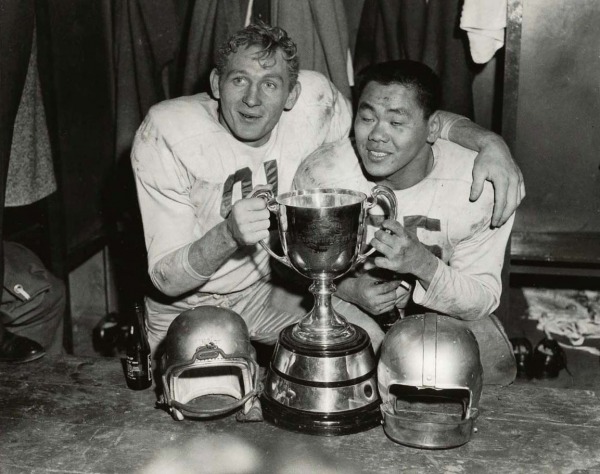
Normie Kwong shown here with teammate Jackie Parker, affectionately known as the "China Clipper", was the first player of Chinese ancestry to play in the CFL. He played his entire career in Alberta, first with Calgary, then Edmonton, winning four Grey Cups. He was known as a brilliant player on the field and his strong sense of community. He later went on to serve the province as the Lieutenant Governor.
Collection: Canada's Sports Hall of Fame
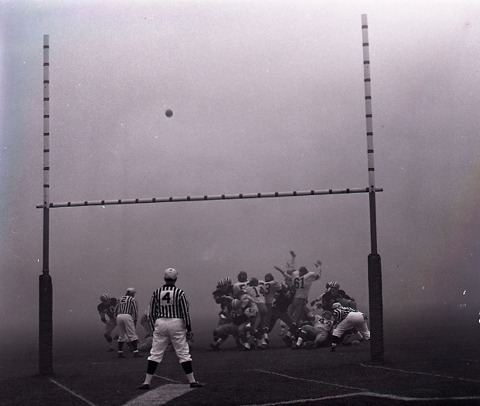
The infamous Fog Bowl was played over two days. The fog rolled in off Lake Ontario and it was so thick that the players could not see the ball in the air and the fans could not see the action on the ground. The game was called with 9 minutes and 27 seconds left to play and was resumed the next day. The final score was Winnipeg 28, Hamilton 27.
Collection: Canada's Sports Hall of Fame
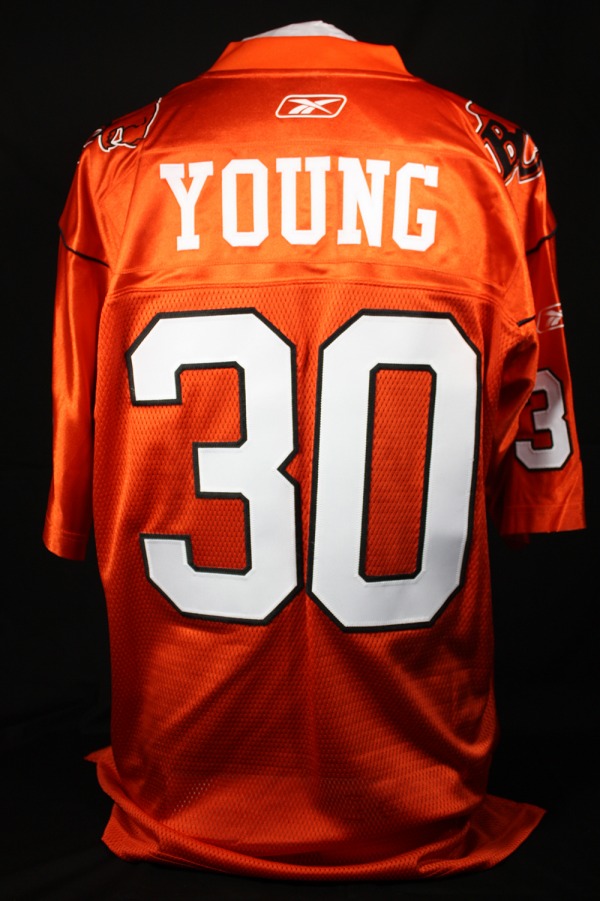
Jim Young, number 30 for the BC Lions, was known as "Dirty 30" for his aggressive style of play. As a wide receiver with the team he held club records for receptions, yards receiving and touchdown passes. After his retirement Jim showed his strong sense of community with his work with the public.
Collection: Canada's Sports Hall of Fame
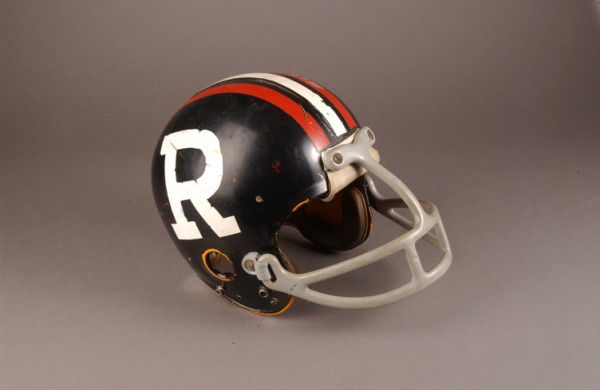
Tony Gabriel won two Grey Cups, one with the Hamilton Tiger-Cats in 1972 and the other with the Ottawa Rough Riders in 1976. He was known for his dedication and dependability, missing only two games in the course of his career.
Collection: Canada's Sports Hall of Fame
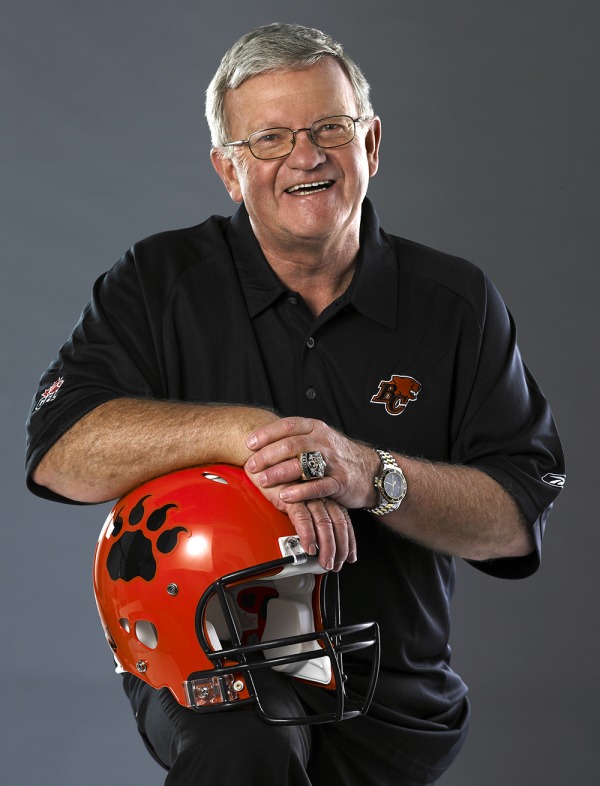
Bob Ackles started his football career as a water boy for the BC Lions in 1953 in their founding year. Through his work ethic, diligence and dedication to the team, he worked his way through the administration to become the General Manager and later President and CEO. His dedication to the game brought him the respect of everyone.
Collection: Private Collection: Ackles Family
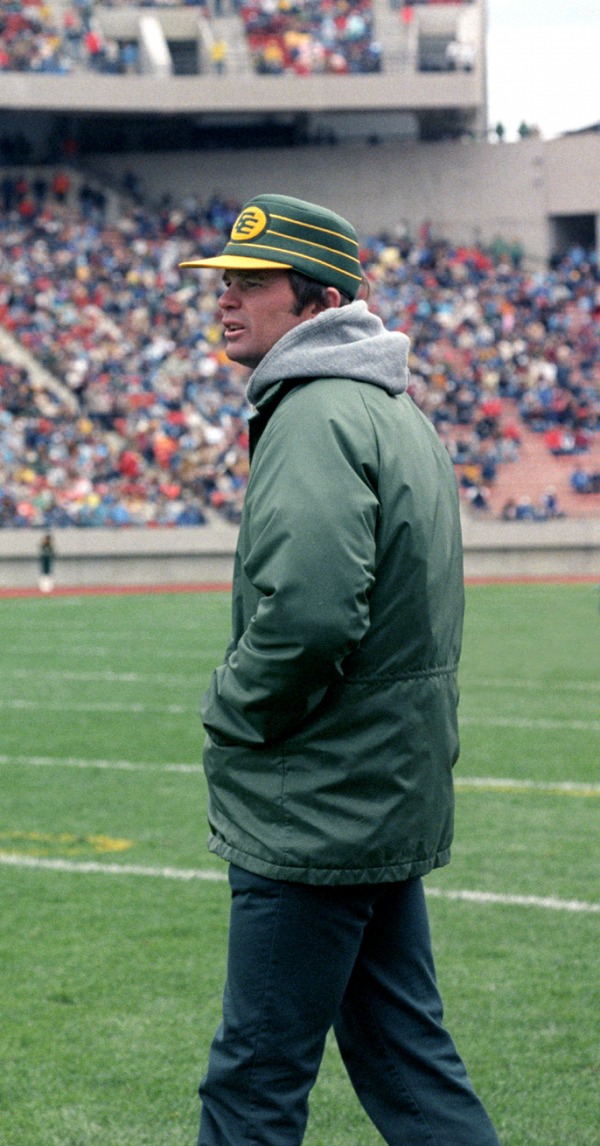
Hugh Campbell's career spanned 33 years as a player, coach and executive. In that time he won 10 Grey Cups, including 5 consecutive wins as head coach of the Edmonton Eskimos. His leadership led the team to work together as a cohesive whole.
Collection: Canada's Sports Hall of Fame
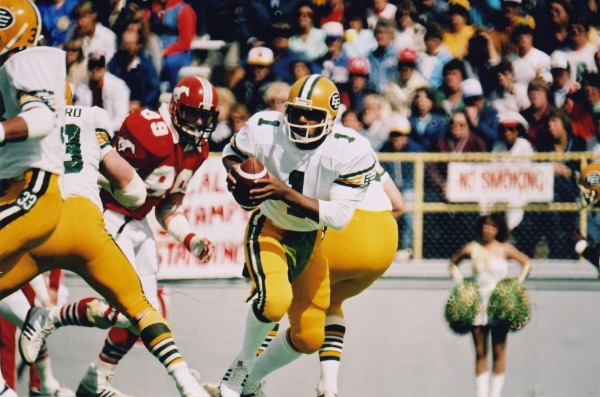
Warren Moon came north from the United States to play with Edmonton Eskimos. The move proved propitious - for Moon, the team, the League and the game. He was the quarterback for the team during their Grey Cup dynasty and was known for his versatility both running and throwing the ball. He was the Grey Cup MVP in 1982 and the League MVP in 1983.
Collection: Canada's Sports Hall of Fame
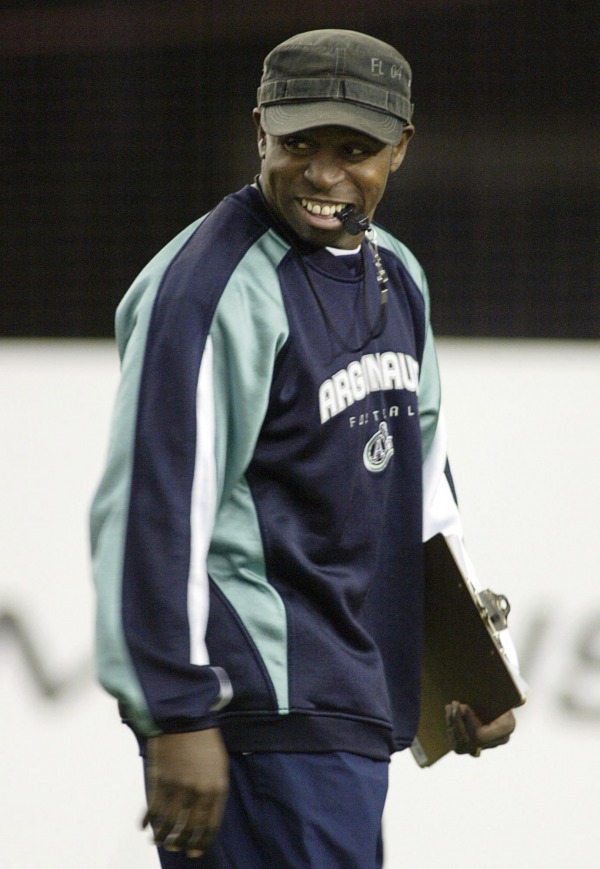
Michael Clemons was a return specialist and running back with the Toronto Argonauts from 1980 to 2000. He got his nickname 'Pinball' after the Argos sideline boss watched him bounce off defenders with blinding speed. He won three Grey Cup Games with the Argos. He has established a foundation for helping disadvantaged youth.
Collection: CP PHOTO/Paul Chiasson
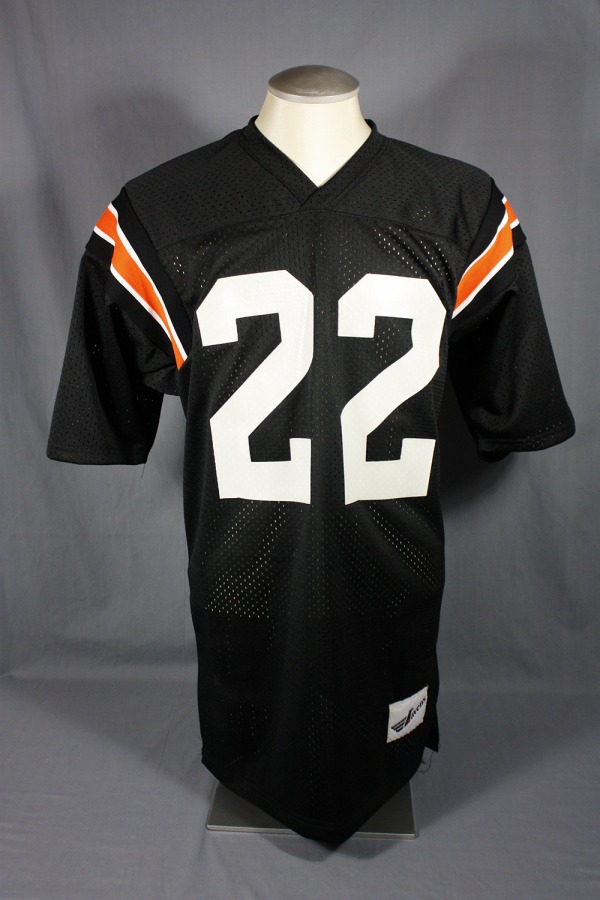
Doug Flutie started his football career winning the Heisman Trophy as the Most Outstanding Collegiate Football Player. During his career with the CFL he won three Grey Cups with Calgary and Toronto, including the infamous snow bowl in 1996, where the field had to be cleared of snow at all time outs and during halftime. He was widely respected for his charity work on behalf of autism.
Collection: Canada's Sports Hall of Fame
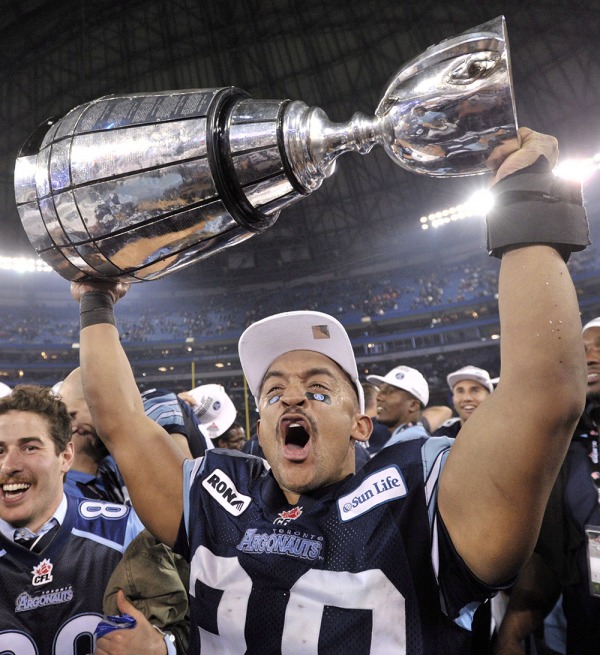
The 100th Grey Cup game was played on November 25, 2012 in Toronto between the hometown Argonauts and the Calgary Stampeders. The Argos got to hoist the Grey Cup trophy as the winners. The game was played in Toronto, which had been the site of the first Grey Cup game. The Grey Cup was recognized by the federal government through Parks Canada as an event of national historic significance in 2012.
Collection: THE CANADIAN PRESS/Nathan Denette
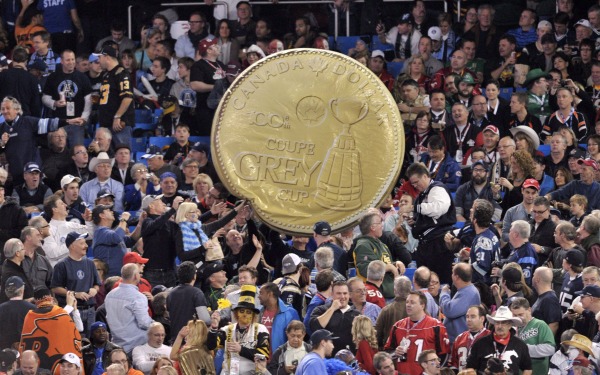
The 100th Grey Cup was celebrated as a national event. There was a Train Tour with three CFL-themed railway coaches that criss-crossed across Canada. Canada Post issued a series of commemorative postage stamps featuring each team in the league. The Royal Mint issued an anniversary loonie with the image of the Grey Cup. At the game fans celebrated with homemade signs and by wearing their team colours.
Collection: THE CANADIAN PRESS/Nathan Denette
Previous Next
